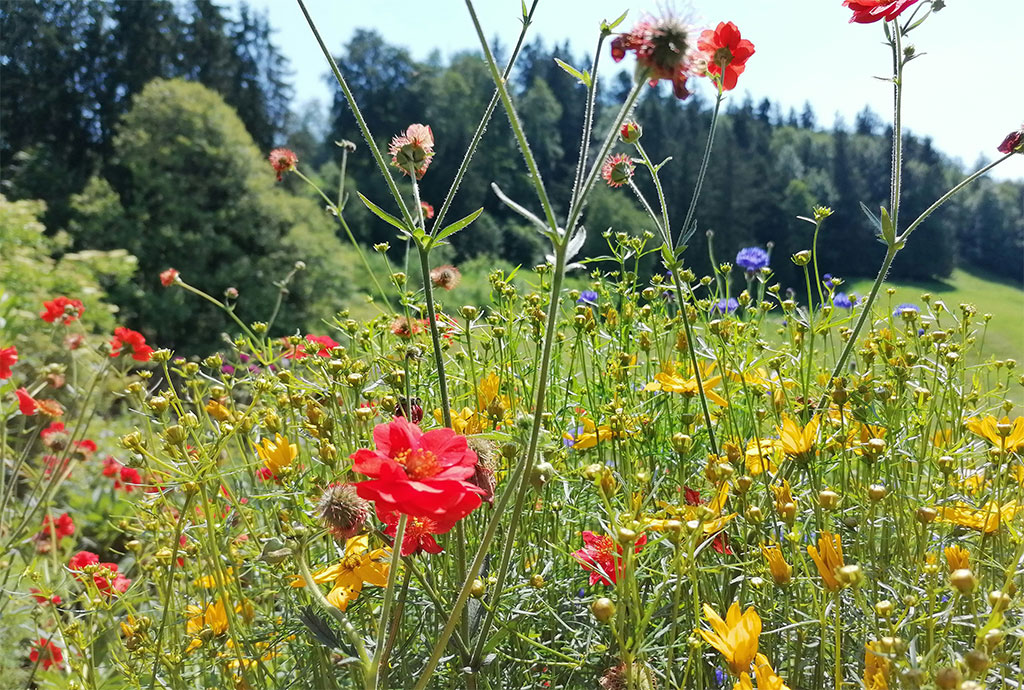
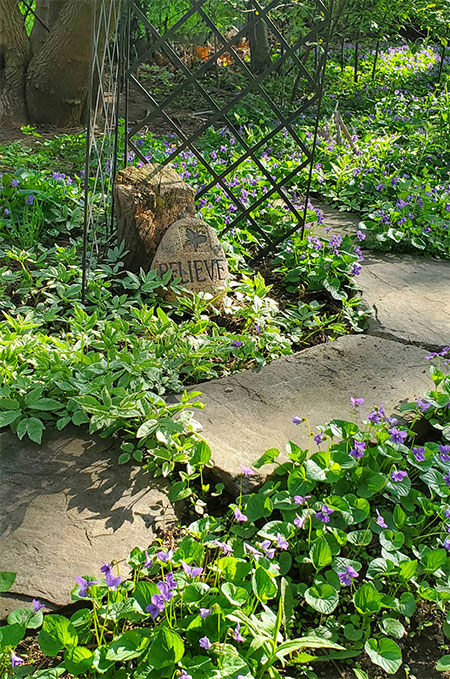
So you’ve found your Hudson Valley paradise, and you want it to feel and look wonderful. You may be faced with a tangle of overgrown brush or a bland patch of lawn and shrubbery, outdoor space that you want to make beautiful and useful, which means it’s time to indulge in some regenerative rewilding.
Rewilding works beautifully around here as a decorating scheme. You may notice that Nature Herself has done a wonderful job with large parts of the landscape, scattering wildflowers and berries, gracious trees, and flowing waters.
For better or worse, humans have made their mark in still other places; better usually happens when we collaborate with Earth’s own urges instead of stomping on them with monocultures or too much blacktop.
There’s a lot of creative room between letting the weeds run completely wild and ruling your corner of creation with an iron fist. Mild rewilding, the kind we’re talking about here, is a way to walk gently on the earth and respect our fellow life forms, and the more places where that’s going on, the better for us all.
That’s what rewilding is all about: intelligent collaboration with the living soil. Rewilding your yard is a powerful way of loving it, putting your own spin on your surroundings in ways that will make life beautiful for you and for every living being in your realm. Mildly rewilded lands have color, form, life, and fragrance that no monoculture can match.
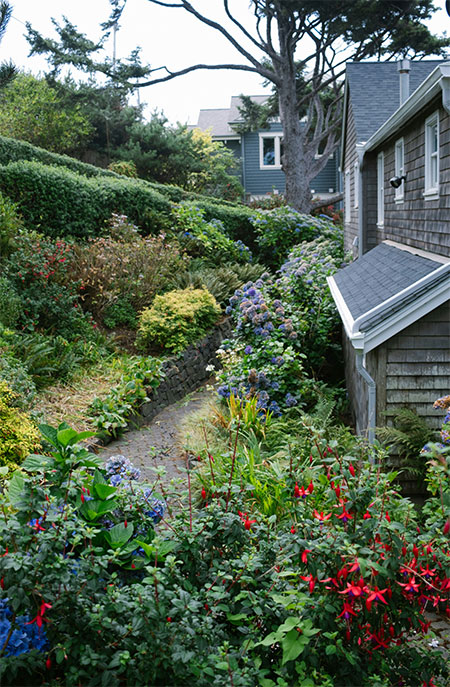
getting started
Look around your outdoor space, including, but not limited to, any spot you’d like to fix up and anywhere you plan to plant a garden. Take photos so you’ll have images to guide you as you hunt for just the right ingredients to make yourself a lush little habitat. Note the patterns of light and shade, the low spots that stay damp, where the soil is deep and where it’s rocky. Get to know the local wildlands. Take an herb walk or a mushroom walk; along with the herbs and mushrooms, look for plants you find beautiful and ask the walk leader to identify them for you. Visit a biodynamic farm and a native nursery. Wild Ones Hudson Valley (midhudsonvalley.wildones.org) is a nonprofit that offers webinars and workshops about transforming your land with native plants; Cornell Cooperative Extension (ulster.cce.cornell.edu/gardening) and the Hudson Valley Farm Hub (hvfarmhub.org/) are both great resources where you’ll find vast stores of data-based wisdom about living well with the local land.
building your wildlands: some basics
Look at the natural stone on your property. Some of it can be rearranged, which is one of the oldest gardening tactics going (that’s where the dry-laid stone walls you’ll encounter in the woods came from—from farmers rearranging stones), and the stones don’t seem to mind. Craft a pretty pile of stones, and you’ll be creating habitat for the small, adorable critters that help keep bugs in check.
If you’re looking to create a patio space, consider using crushed stone to keep the surface permeable. Good stormwater management is an essential part of property maintenance and environmental harmony. To avoid disappointment, do your research. Know how much shade, sun, and moisture various plants prefer, and plant accordingly. The beauty of planting native is that once established, your garden will be easier to care for,
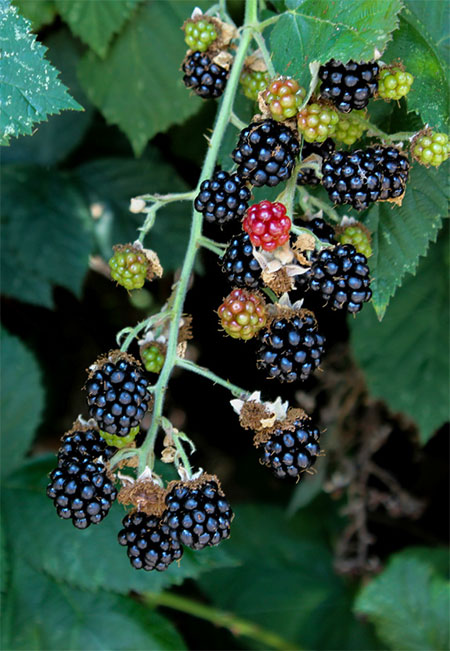
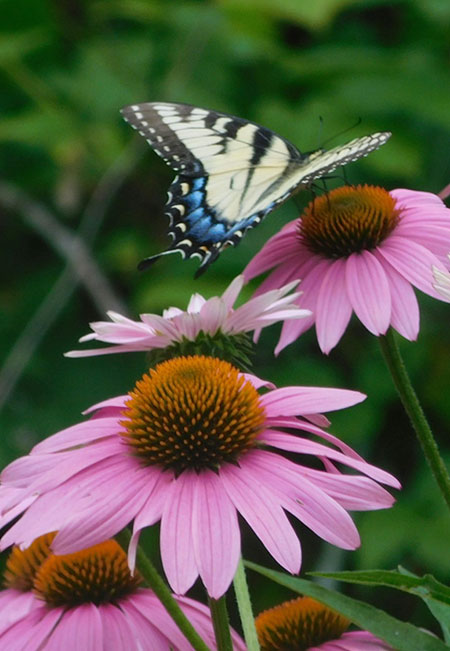
Consider making your perimeter a food forest. Berries grow extravagantly well in most places in the Hudson Valley, producing loads of sunshiny sweetness with minimal care. Wineberries are officially invasive, and you’ll want to keep them under control, but they’re also outrageously tasty and have more or less already invaded. Blackcap raspberries are native and will also run wild if you let them. Huckleberries and blueberries will thrive, especially at higher elevations. Antioxidant-rich elderberries and the under-appreciated pawpaw grow happily into lush trees that produce sweet fruit, and black walnut trees bring free protein. Inoculating a mushroom log is a fairly simple process and can keep you in shitakes or oysters.
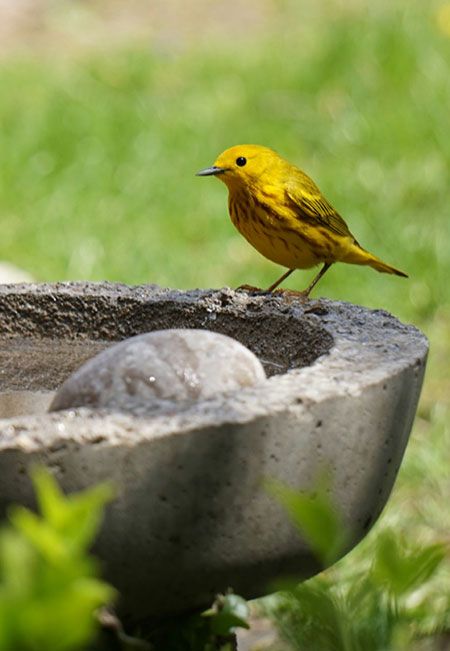
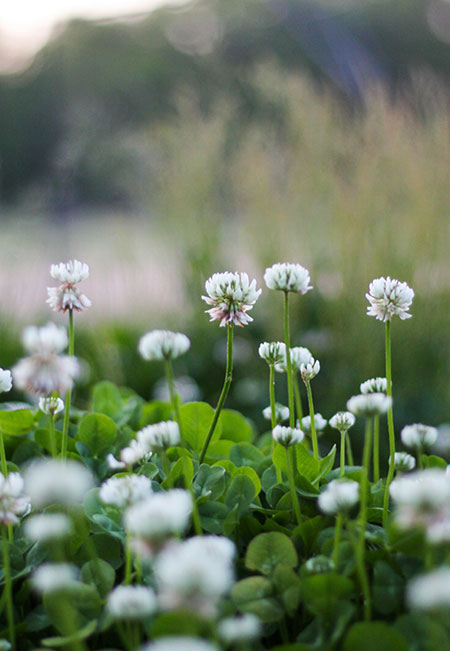
Add a meadow layer. Next to your food forest, plant things that grow to moderate height and add pops of color. Plants like echinacea (coneflower), anise hyssop, sweet flag, Solomon’s seal, wild indigo, laurel, snakeroot, angelica, and jewelweed are just some of the natives with medicinal properties and the ability to set pollinators blissin’.
Add a water feature. It can be as simple as a birdbath or as elaborate as a pond with a small waterfall, but it adds a lovely vibe and wildlife will love you for it.
Reclaiming lawn space. Clover is drought resistant, pretty, and silky on bare feet. You can add some by mowing the grass low, raking out any dead grass or debris, and then broadcasting your chosen native clover seed, mixed with sand, sawdust, or light soil to help it spread. Rake again to work your seeds into the soil, water for the first couple of weeks, and you will see clover starting to establish itself. Anyplace it takes over completely won’t need mowing more than a few times a year.

